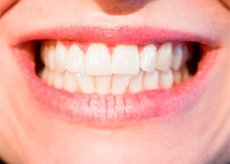New publications
It is now possible to artificially grow tooth enamel
Last reviewed: 02.07.2025

All iLive content is medically reviewed or fact checked to ensure as much factual accuracy as possible.
We have strict sourcing guidelines and only link to reputable media sites, academic research institutions and, whenever possible, medically peer reviewed studies. Note that the numbers in parentheses ([1], [2], etc.) are clickable links to these studies.
If you feel that any of our content is inaccurate, out-of-date, or otherwise questionable, please select it and press Ctrl + Enter.

The specialists, who are representatives of the British University of Queen Mary (London), demonstrated their latest development. It is a method for growing a special mineralized material capable of restoring hard tissue - for example, tooth enamel or bone.
Research and further work on the creation of the material was carried out under the leadership of Professor Sherif Elsharkawy.
The enamel coating present on the outer surface of the teeth is a particularly strong tissue in the entire human body. Due to the resistance of enamel to damage, teeth are able to perform their function normally for a longer period of life - and this despite the fact that teeth have to constantly experience various loads in the form of mechanical damage and sudden temperature changes. But even such a strong tissue is not without its drawbacks: for example, an obvious "minus" is the inability of the enamel coating to recover. Because of this shortcoming, a person periodically experiences pain, and may even lose the affected tooth.
The problem of enamel damage affects every second inhabitant of our planet. The scale of this problem is really great, and scientists have been trying to find a way to restore the protective coating for a long time.
The newly created recovery mechanism is based on such material as a protein substance, which is capable of activating and targeting the growth of apatite nanocrystals, coordinating and adjusting their sizes. In exactly the same way, crystals develop inside the body during the formation of the dental enamel layer.
Nanocrystals have an elongated configuration: their structural organization is microscopic prismatic forms that can grow and transform into an enamel layer. Such material can be built up on almost any uneven surface, as well as on living dental tissue.
The method is surprisingly simple and universal, so the mechanism of extension created by scientists opens up prospects in dental treatment and restoration of dental tissues. The unique technology can be used in a wide range of dental procedures, including those related to the prevention and treatment of damaged or hypersensitive teeth. As an example, researchers have soon planned to develop acid-resistant materials that can be placed in problem areas. Such materials will be able to mineralize and create protection for open dentinal dental tubules, which will make it possible to treat increased dentin sensitivity.
The full version of the research results can be read on the website of the British University – Queen Mary University of London (https://www.qmul.ac.uk/media/news/2018/se/scientists-develop-material-that-could-regenerate-dental-enamel-.html).
